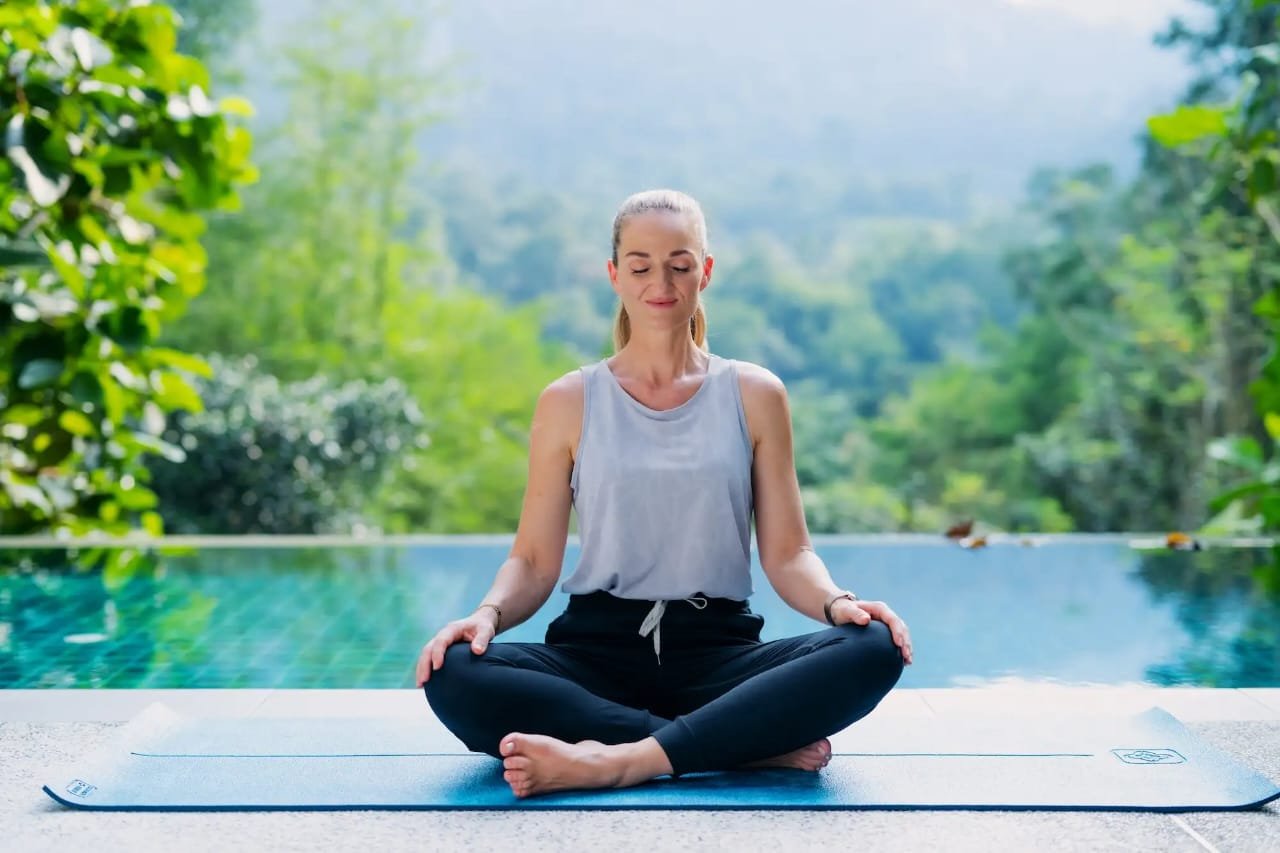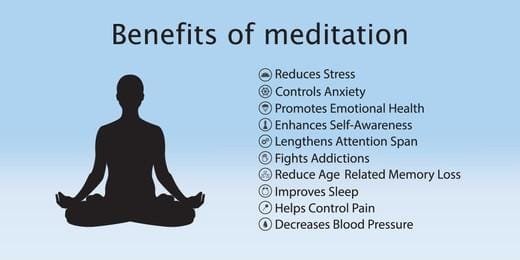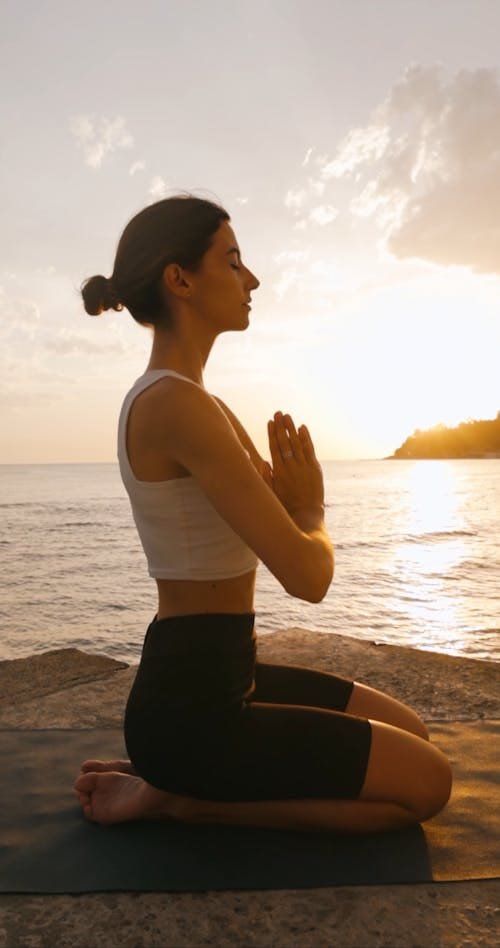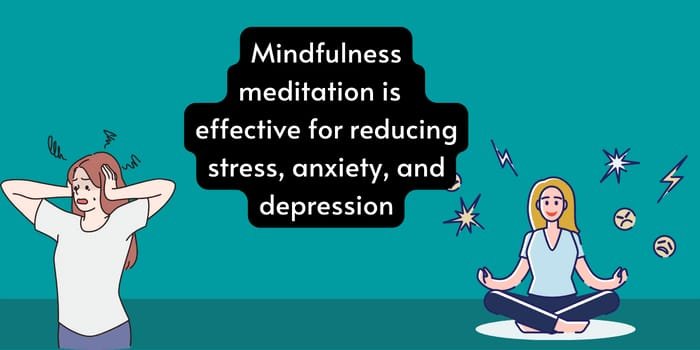
Meditation Techniques for Stress Relief and Anxiety:
Meditation Techniques
In today’s fast-paced world, stress and anxiety have become common struggles for many. Between work pressures, personal responsibilities, and the constant buzz of digital life, it’s easy to feel overwhelmed. Fortunately, meditation has emerged as a powerful tool for calming the mind, reducing stress, and managing anxiety. This article explores practical meditation techniques anyone can use to bring balance and peace into their lives.
Why Meditation Works for Stress and Anxiety

Before diving into specific techniques, it’s important to understand why meditation helps reduce stress and anxiety. Scientific studies show that regular meditation reduces cortisol levels, the hormone responsible for stress. It also promotes mindfulness, allowing us to observe our thoughts without judgment, preventing them from spiraling into anxious loops.
Meditation encourages a state of relaxation by activating the parasympathetic nervous system, which slows the heart rate and eases tension. With consistent practice, it improves emotional regulation, focus, and resilience against everyday stressors.
1. Mindfulness Meditation: Cultivating Present Moment Awareness
One of the simplest and most effective meditation techniques for stress relief is Mindfulness Meditation. The idea is to focus your attention fully on the present moment without judgment.
How to Practice Mindfulness Meditation:
- Find a quiet place where you won’t be disturbed.
- Sit comfortably with your back straight.
- Close your eyes and take a few deep breaths.
- Focus your attention on your breathing — the sensation of air entering and leaving your nostrils.
- When thoughts arise, gently bring your attention back to your breath without frustration.
Tip: Start with 5-10 minutes a day and gradually increase your practice time.
Mindfulness meditation helps break the habit of overthinking and ruminating, which fuels anxiety. Instead of dwelling on the past or worrying about the future, you learn to appreciate the present moment.
2. Guided Meditation: Letting Go with Expert Guidance

If you find it difficult to meditate alone, Guided Meditation can be incredibly helpful. In this method, an instructor provides step-by-step instructions, often accompanied by calming background music or nature sounds.
How to Get Started:
- Use apps like Headspace, Calm, or Insight Timer for a variety of guided sessions.
- Choose a session focused on stress relief or anxiety reduction.
- Follow the instructor’s voice and visualization prompts.
This technique removes the guesswork and makes meditation more approachable, especially for beginners. Guided sessions often include visualization techniques that help you imagine a peaceful place, which can drastically lower anxiety levels.
3. Body Scan Meditation: Reconnecting Mind and Body
For people dealing with chronic stress or anxiety, Body Scan Meditation is a powerful tool. It helps build awareness of bodily sensations, which often go unnoticed until stress manifests physically.
Steps to Practice Body Scan Meditation:
- Lie down in a comfortable position.
- Close your eyes and take several deep breaths.
- Slowly direct your attention to different parts of your body — starting from your toes up to your head.
- Notice any tension, discomfort, or sensations without trying to change them.
- Acknowledge each feeling and move to the next area.
This technique promotes relaxation and helps you identify where tension accumulates. By consciously releasing physical tension, mental stress also begins to melt away.
4. Loving-Kindness Meditation: Cultivating Compassion
Loving-Kindness Meditation (Metta Meditation) focuses on developing feelings of compassion towards yourself and others. This technique is particularly useful when anxiety stems from self-criticism or interpersonal conflicts.
How to Practice Loving-Kindness Meditation:
- Sit comfortably with your eyes closed.
- Begin by silently repeating phrases such as:
- “May I be safe.”
- “May I be happy.”
- “May I be healthy.”
- Gradually extend these wishes to loved ones, acquaintances, and even people you have difficulties with.
- Feel the warmth and kindness grow within you.
Practicing Loving-Kindness shifts your focus from fear and worry to positive emotions, helping reduce anxiety and increase emotional resilience.
5. Breathwork Meditation: The Power of Conscious Breathing

Focusing on your breath is one of the simplest yet most powerful techniques to combat stress and anxiety. Breathwork Meditation emphasizes conscious breathing patterns to activate the body’s relaxation response.
Simple Breathwork Technique:
- Inhale deeply through your nose for a count of 4.
- Hold the breath for a count of 4.
- Exhale slowly through your mouth for a count of 6.
- Repeat this cycle for 5-10 minutes.
Breathwork lowers heart rate and reduces the production of stress hormones. It’s a highly effective technique that can be practiced anywhere — during a work break, before a stressful meeting, or even in traffic.
6. Movement Meditation: Mindful Walking or Yoga
Meditation doesn’t always require sitting still. Movement Meditation, like mindful walking or yoga, allows you to focus awareness on the body’s movements and sensations.
How to Practice Mindful Walking:
- Walk slowly and deliberately.
- Pay attention to each step — the sensation of your feet touching the ground.
- Observe your breathing and posture.
- If your mind wanders, gently bring it back to your steps.
Yoga combines breathwork, mindfulness, and gentle movement, making it perfect for relieving both physical and mental tension.
Making Meditation a Habit
Consistency is key. Even practicing for just 5-10 minutes daily can make a significant difference over time. Set a specific time and place for your meditation practice, making it part of your routine.
Pro Tips for Success:
- Start small and gradually increase your practice time.
- Be kind to yourself when your mind wanders.
- Use apps or online videos if you need extra guidance.
- Track your progress to stay motivated.
Conclusion: Embrace Peace through Meditation

Stress and anxiety don’t have to control your life. With simple and practical meditation techniques, you can learn to calm your mind, manage your emotions, and improve your overall well-being. Whether it’s mindfulness, guided sessions, body scans, loving-kindness, breathwork, or mindful movement, each technique offers a unique path toward inner peace.
Start today, and give yourself the gift of tranquility.

Aiman Fatima
September 11, 2025Meditation is truly a game-changer when it comes to managing stress and anxiety. I love how simple techniques like mindful breathing or guided sessions can create such a big impact on mental well-being. It’s amazing how just a few minutes a day can bring clarity, calmness, and balance in our hectic lives. Definitely worth making it a daily habit! 🌿🧘♂️